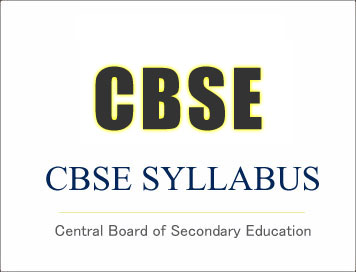
National Institute of Open Schooling (NIOS) | Class XII Syllabus - Typewriting
Senior Secondary Course (Syllabus)
Typewriting (323/423)
Total Study Time 250 Hours (50 Hrs. Theory, 200 Hrs. Practical) [Theory: 30 Marks]
(Theory & Practicals) Max Marks: 100 [Practical: 70 Marks]
RATIONALE
Typewriting has become a necessary for modern human life. Its use as a laboursaving
device is increasing. It is a very useful method of communication and expression. It has
established itself as a very gainful source of employment. It is a skill which today every
civilized human being must cultivate whether he is in business, administration, profession
or vocation. The study of the subject would prepare the students mot only for
employment but also for running their own institutes. The course includes necessary
theoretical knowledge about typewriting. This is expected to provide essential
background information considered useful for creating awareness about job of a typist
which is so challenging.
STATEMENTS OF OBJECTIVES
This course aims at enabling learner to:
GENERAL OBJECTIVES
- Develop skills in quick written communication;
- Cultivate personal and vocational skills in typewriting;
- Improve essential traits and behaviour pattern e.g. concentration, judgment, initiative
etc.
1. TYPEWRITER AND ITS PROPER MAINTENANCE
Study Time: 6 hrs.
APPROACH
This module is designed to provide the learners with essential background information on
the typewriter. This would enable them to choose a suitable typewriter and handle it
properly to gain its maximum utility. This module is also useful for them to know how to
take care of their typewriter so that it can give reliable and uninterrupted service.
PRE-REQUISITE KNOWLEDGE CONTENT UNITS
Familiar with a typewriter and typed matter.
- 1.1 Typewriter – its use and importance.
- 1.2 A standard typewriter.
- 1.3 Makes and categories of typewriters.
- 1.4 Essential parts of a typewriter and their uses.
- 1.5 Care and upkeep of a typewriter.
- 1.6 Ribbon changing and ribbon economy.
SUGGESTED TEACHING HINTS
(i) Explanation and illustration on electronic typewriter, word processor and
chequewriting typewriter may be included (1.3)
(ii) Illustrations on essential operative parts may included in (1.4)
SUGGESTED LEATNING EXPERIENCES
Visits to exhibitions and showrooms displaying typewriters and word processors and
collection of related literature.
2. METHODS OF TYPEWRITING
Study Time: 4 hrs.
APPROACH
This modules has been designed to acquaint the learners with different methods of
typewriting and their evaluation.
CONTENT UNITS
- 2.1 Methods of typewriting.
--2.1.1 Touch
--2.1.2 Sight
Their merits and demerits
- 2.2 Approaches to typing
--2.2.1 Horizontal
--2.2.2 Vertical
SUGGESTED TEACHING HINTS
3. KEY-BOARD OPERATION
Study Time: 8 hrs.
APPROACH
This module is designed to enable the learners to develop correct setting posture before
the typewriter and operate the keyboard with skill, efficiency and confidence. The
practice series provided in the lesson would enable them to type correctly and gradually
master the keyboard operation.
PRE-REQUISITE KNOWLEDGE
Methods of Typewriting.
CONTENT UNITS CERTIFICATION
- 3.1 Setting posture
- 3.2 Insertion and removal of papers
- 3.3 Learning the second row (home row) – guide keys and home keys
- 3.4 Learning the third row (upper row)
- 3.5 Learning the first row (bottom row)
- 3.6 Learning the fourth row (number row)
- 3.7 Special signs and symbols in the keyboard and their uses.
SUGGESTED TEACHING HINTS
(i) Lessons be well illustrated.
(ii) Rhythmic typewriting may be explained
(iii) Use of copy holder may be explained under 3.1
SUGGESTED LEATNING EXPERIENCE
Video films on different techniques of typewriting may be shown.
4. DISPLAY IN TYPEWRITING
Study Time: 12 hrs.
APPROACH
Special care must be given to the way in which a message is expressed so as to create
right effect on the recipient. This module has been designed to acquaint the learners with
latest styles of display while typing paragraph, letter, etc. This would enable them to
achieve high standards in typing.
PRE-REQUISITE KNOWLEDGE
Typing
CONTENT UNITS
- 4.1 Centering
- 4.2 Margin-spacing and line-spacing
- 4.3 Use of punctuation
- 4.4 Figures – Arabic and Roman
- 4.5 Paragraph – types and styles, and numbering
- 4.6 Styles of typing different kinds of letters
- 4.7 Syllabification
- 4.8 Foot-motes